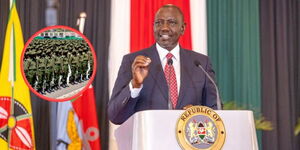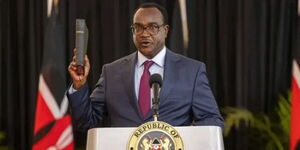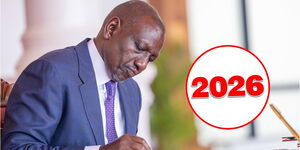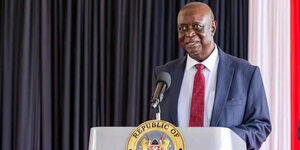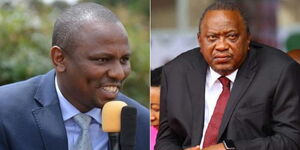Education in Kenya continues to grow more expensive with each passing day, widening the gap between the haves and the have-nots, with a colossal number of students who sat for the Kenya Certificate of Secondary Education (KCSE) in 2023 on the verge of missing out on university.
The worst hit by this directive is private universities as they grapple with a low enrollment of students, hindering their operations.
This follows the government’s decision to significantly scale down the tuition and upkeep funds for students.
In the Financial Year 2024/25, the Higher Education Loans Board (HELB) stated, in a document tabled before Members of Parliament (MPs) and obtained by Kenyans.co.ke, that the proposed estimate is Ksh28.1 billion.
As noted, this amount is only able to fund the education of continuing students (Year Two to Year Six), leaving behind the 2023 KCSE students who are supposed to join university this September.
In the FY 2023/24, HELB was allocated Ksh31.89 billion for tuition and upkeep loans.
Additionally, the amount is extremely low to cater to the needs of the 122,634 students who sat for the KCSE last year.
Year One students require about Ksh13.8 billion. However, with the drastic reduction in student loans, the document presented before the MPs stated that the proposed allocation in the FY 2024/25 estimates is Ksh2.4 billion, which in turn leaves a significant funding gap of Ksh11.4 billion. This will lead to far-reaching effects on university education.
The Ksh2.4 billion, as per HELB, can only fund 21,512 students, putting the other 101,122 students at a disadvantage.
“To fund the Year One (KCSE 2023 cohort) students through tuition and upkeep loans, HELB will require Ksh13.8 billion for 122,634 university students,” the document read in part.
It further stated that HELB has a financial deficit of Ksh11.4 billion in the FY 2024/25 proposed estimates, adding, “With the available funding, HELB can fund all continuing students but only 17.2% of the students who will be joining university in 2024.”
Continuing students will similarly bear the brunt of the new budget in the FY 2024/25, as the National Treasury also reduced the students’ budget by Ksh16.5 billion from Ksh34.1 billion (allocated in the FY 2023/24) to Ksh17.5 billion.
Nonetheless, the National Treasury allocated Ksh22 billion for scholarships for university students under the new funding model, which is in its second year of implementation.
The funding, which was introduced by President Ruto in May 2023, prioritizes a student’s financial needs. What’s more, Ruto rolled out the model in an effort to get institutions of higher learning out of hot water with huge debts and being constantly cash-strapped.
As per the model, students from vulnerable to extremely needy households will receive 100% funding.
The needy and less needy get 93% of government funding, with their guardians required to settle the remaining 7%.
President Ruto noted that the funding will be made available as scholarships, loans, and household contributions.

